Expert Q&A: Steward T.A. Pickett
By Amy Nelson
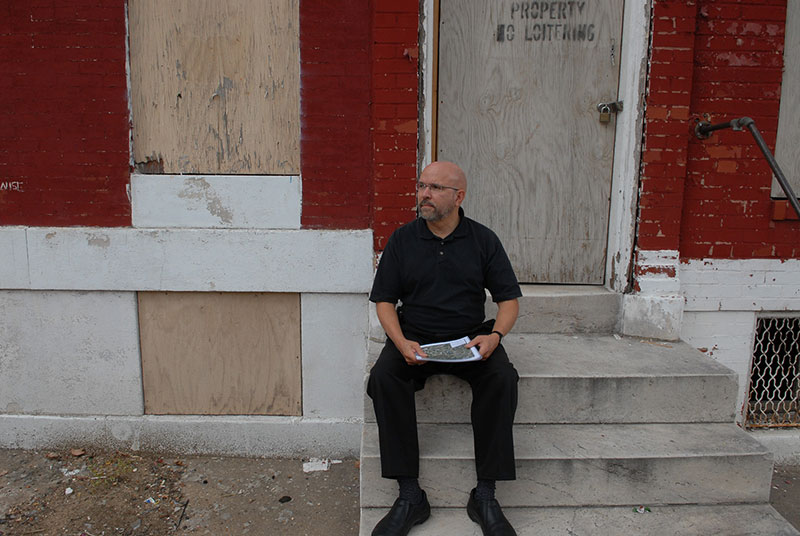
Steward T.A. Pickett is a Distinguished Senior Scientist at the Cary Institute of Ecosystem Studies, in Millbrook, New York. He has a PhD from the University of Illinois. His research focuses on the ecological structure of urban areas and the changes in vegetation through time after disturbance. He has worked in primary forests and post-agricultural fields in the Eastern U.S., and in stream-side woodlands in South African savannas. He believes that ecological knowledge about cities is crucial for both improving the environment and residents’ well being. He served as Director of BES for 18 years, handing over the reins in 2016. He has written books on spatial patterns and their changes in ecology, humans as a part of ecosystems, conservation, how to connect ecology with urban design, and linking ecology with ethics. He has served as President of the Ecological Society of America, and is on the boards of the American Institute of Biological Sciences and the City as Living Laboratory.
You are one of the pioneers of urban ecology. How did the field begin, and how has it evolved in recent decades?
Urban ecology in the United States really started about 25 years ago. In the 1990s, a group of people (of which I was a part) began looking at forests in New York City and noticed some odd sorts of behaviors in the forest soils. Mark McDonnell, the leader of that project, said, “We need to examine not only the forests in the city, but those in the suburbs and out into the countryside.” That was the beginning of modern American urban ecology. That comparative approach—where you look at certain kinds of habitat in a city and around a city and you compare them to find out what the urban effects are—is still a very common and important kind of study. We can call that “ecology in the city.”
In the late 1990s, due to some funding from the National Science Foundation and the USDA Forest Service, there was a growing realization that you had to look at these habitats not just as something separate from the urban effect, but as part of a whole system. You wanted to understand how a whole city, town, or suburban region behaved as an ecological system. That began to be called “ecology of the city.” When you start looking at ecology that way, you’re obliged to examine things like social science, hydrology, and policy. This complex, whole-system approach is still a big frontier for science.
As we and other researchers began to do more ecology of the city, and became more familiar with the needs of agencies and communities, we decided that we needed to start talking about urban ecology in a broader frame. We knew that we needed to work with people—in communities, various governmental agencies, and non-governmental organizations—to generate knowledge about the city that is useful to those who manage and live in it. This is ecology for the city. It is not science coming in and handing down insight. It is based on equal partnership and dialogue. With ecology for the city, urban ecology has evolved to produce what many people call “actionable knowledge” that can help solve problems for communities and government.
[All three types of urban ecology are] still necessary. The study of urban systems from an ecological perspective is still pretty new. It is a baby science. We still need a lot of basic knowledge, but the field is now much more comfortable with the kinds of studies that have immediate practical value.
Urban ecology has also evolved to become more diverse. I don’t just mean the ethnic or social diversity of the people doing it (although fortunately that is increasing) but the kind of values people bring to the discourse. That is becoming much more inclusive. But this can get tricky because when you have a diverse team that includes researchers, residents, and agency people, each constituency can have a very different set of rewards they’re working toward. So urban ecology has gotten more practical and inclusive, but it has also gotten harder.
Is urban ecology also becoming more diverse in terms of the disciplines involved? Are you seeing more collaboration with social scientists?
Yes. The involvement of social sciences was really the first step in moving from ecology in the city to ecology of the city. Ecologists now often work very closely with sociologists, anthropologists, cultural geographers, environmental lawyers, historians, engineers. The disciplinary range is really huge now.
It seems that the term “green infrastructure” is often thought of as being synonymous with water quality Best Management Practices (BMPs), when it is really so much more. How do you define green infrastructure, and generally speaking, how do you think it can contribute to resilient urban communities?
I agree that green infrastructure, which started out being a broad and open-ended tool, seems to have been co-opted and narrowed to focus on stormwater management. I define green infrastructure as any component of an urban area that is based on a biological contribution to the urban fabric. It is plants, animals, and microbes, and the interaction of these organisms with the physical resources and environmental constraints and signals.
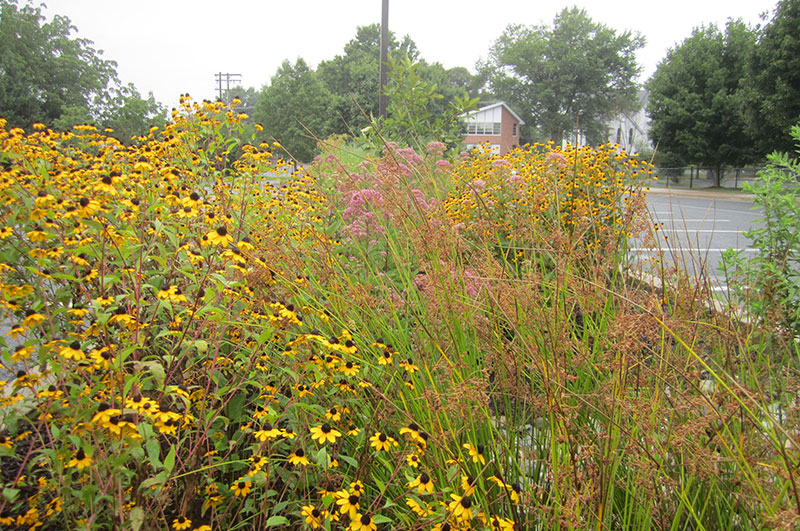
Green infrastructure is about much more than one particular problem being solved. I am currently working on a project examining green infrastructure-relevant plans for 20 cities. There are more than 90 such plans within those cities. Some are discrete green infrastructure plans, but green infrastructure often pops up in plans for parks, stormwater management, or climate adaptation. When you think about the things green infrastructure can do, it is a really long list. That list is based on the biological work that can be done in cities by plants and animals and their interaction with the larger environment (including social). Green infrastructure is anything that does biological work in the city, and it can be used to reduce dependence on mechanical or chemical work. Green infrastructure also has the potential to deliver big health and social benefits, but you have to design and manage your green infrastructure to make sure people have access to those values.
There is also a big caution with how green infrastructure is conceived broadly, however. In analyzing green infrastructure plans across those 20 cities, and through research being conducted in other cities, we are learning that you cannot burden communities with management of green infrastructure unless that is something the community is prepared for, interested in, and has the capacity to make work.
Urban planners have to address a variety of challenges and problems (economy, housing, crime, energy, food, transportation, water, climate change, legacy issues like racism, pollution, etc.) and to do that, they must apply a lot of tools. What type of ecosystem do you think is the most powerful multi-tool for addressing the types of challenges faced by urban planners?
If you are thinking about ecosystems as discrete places being tools, then the answer is that it depends on the kind of general habitat. For example, in uplands, particularly in the eastern U.S., woodlands and forests are going to be the best kind of ecosystem to generate a whole range of benefits. But with ecology of the city, you want to think about how you spread the benefits of woodlands, throughout the whole metropolis.
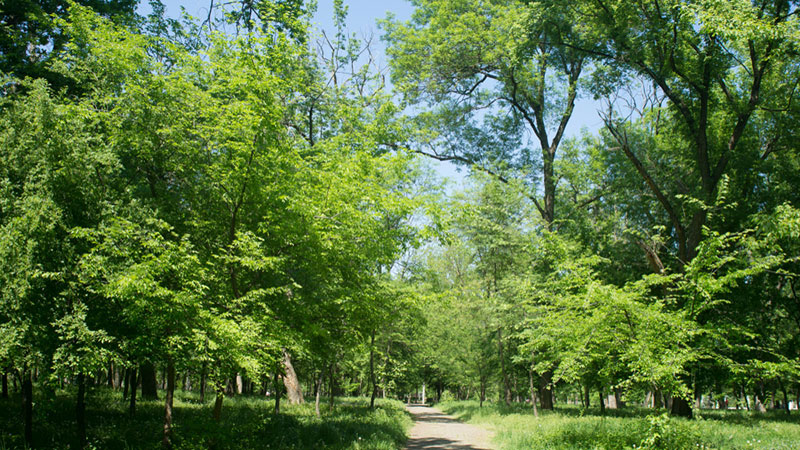
How do you do that? What are some of the services and benefits that the woodlands in that example could bring to an entire urban area—including those that may be lesser known?
When we first started doing our research in Baltimore for the Baltimore Ecosystem Study, we focused on nutrient control from the riparian zones of streams. We discovered pretty quickly that those areas were not providing the service of nitrate retention that everybody had expected based on work that had been done in the countryside and intact forest areas. In conversation with leaders and managers in Baltimore, we realized that if we want the nutrient control benefit from trees, we’re going to have to treat our whole watersheds as functional riparian zones, and we’re going to have to spread the benefits of trees throughout the city. That was one of the arguments the City used when they established a goal to double Baltimore’s tree canopy in a few decades (from around 21% to around 40%). That is literally spreading the forest throughout the city. Some of this work in Baltimore has provided a model, a methodology that is used throughout the state of Maryland and in many other cities to help them strategize about their urban canopies.
Spreading the trees also helps bring biodiversity. Having a range of sizes of trees really helps diversify the community of native birds. You can have contributions to bats, amphibians, and pollinators. There is also a growing amount of information about the contribution of green infrastructure or trees to psychological health. Immersion in green spaces, provision of a senses of place…these are psychological benefits of trees. Spreading the trees also brings educational opportunities. It provides something different that can engage students (and teachers) in learning about things outside of textbooks and the doors of the school. Trees and other forms of green infrastructure can also help us to learn about change. They can be tools for learning about data collection and analysis, and they can be used to provide different styles of learning. Social cohesion is another benefit of green infrastructure. It can be generated by gardening, foraging, or forest stewardship. Forests can also get people involved in community place-making. In Baltimore, a not-for-profit group called Baltimore Greenspace, is helping communities to see the trees in their neighborhood not as individual trees, but jointly, as a forest. That gives these communities a joint sense of place.
Those are just some of the benefits that spread outside of specific projects or riparian zones.
We’ve done issues on urban ecology, urban forestry, and urban waterfronts, and experts consistently say that people and initiatives with the best of intentions often fail because the community is not engaged early on and the history and culture of that community is not well-studied and factored in. Communities may associate “greening” with safety issues, trash, or gentrification, and there may be resistance. What strategies do you recommend to planners who are trying to re-integrate ecology back into our cities in a way that is most likely to be embraced and stewarded by all types of communities?
One answer is that you really have to figure out the concerns of particular communities. You have to listen to people. You have to figure out what they want and what they fear, and you have to take that stuff seriously.
If you have green infrastructure in your back pocket, you might need to keep it there for a while, and spend time getting to understand the community and learn what their concerns are. Ideally, at a certain point in a series of conversations, you’ll find some way to pull the green infrastructure out of your pocket and explore how that tool that can contribute to what that community needs.
Planners, designers, and those of us doing research are often perceived as being in positions of power and associated with institutions that are not famous for listening. Putting a lot of effort into respectfully listening is big. Too often, projects are “helicoptered” in. “Here’s this best management practice. We’re going to put it in here. Aren’t you grateful?” Whoever “we” is walks away and leaves the community with something they may not understand or have asked for. You have to think of this kind of work as a way to engage community with their ecology in the context of their own needs and fears.
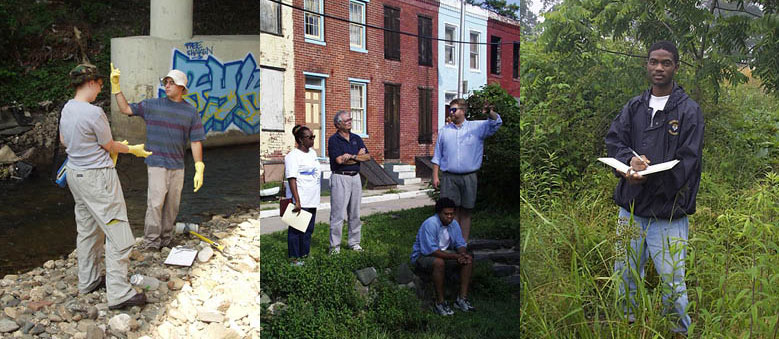
Based on what you have seen, what are the most effective ways to begin that process of respectful listening to and earning the trust of a community?
I have seen work with community groups— faith based or otherwise—to be a good entry point. They are often already seen as the trusted institutions, so getting involved with them is probably the single best thing I have seen work. Gentrification associated with greening can be a real fear in communities that are not necessarily wealthy or empowered, because there do not seem to be very many things in the policy landscapes that recognize that those folks might need protection. So those of us who may have a better connection with the power structures need to be aware of that.
Baltimore Ecosystem Study has been going on since 1997. When it first began, what did you set out to accomplish? Did the goals change over time?
When we first started, our main support came from two places. Money came from the National Science Foundation, which is focused on basic science research. The other big supporter, in terms of the time of its staff—hydrologists, soil scientists, social scientists, technology transfer experts, and a whole range of people—was the USDA Forest Service. Having those two sources of support helped us balance the need for basic information with the need for information that could feed into problem-solving approaches.
We started out saying, “We have been charged with understanding the city as an ecological system” and that was the first thing that we did. But we realized we were obliged to do things that would justify the welcome of communities, agencies, and non-profits, so we always did some work that had some practical value. It has evolved to become much more comfortable with the ecology for approach. It has become more embedded in the metropolitan problem-solving space.
What have you learned about the legacy of racism in Baltimore, and how can that inform planning of cities that are not just resilient to the impacts of climate change, but resilient in terms of lasting social and environmental justice?
We learned that the legacy is not just in the past. Racism is not something that is over, and the structures that were built on racism are not all dismantled. There are a lot of results and ongoing processes that result from differential investment and disinvestment based on race that still operate in Baltimore. We are looking at other cities and this is not limited to Baltimore. The exclusion of certain communities from access to the usual wealth accumulation processes (mortgages and equity), the lack of support for social cohesion that emerges from lack of employment opportunities and constrained educational opportunities, and concentrated poverty are ongoing realities that have deep, racial roots.
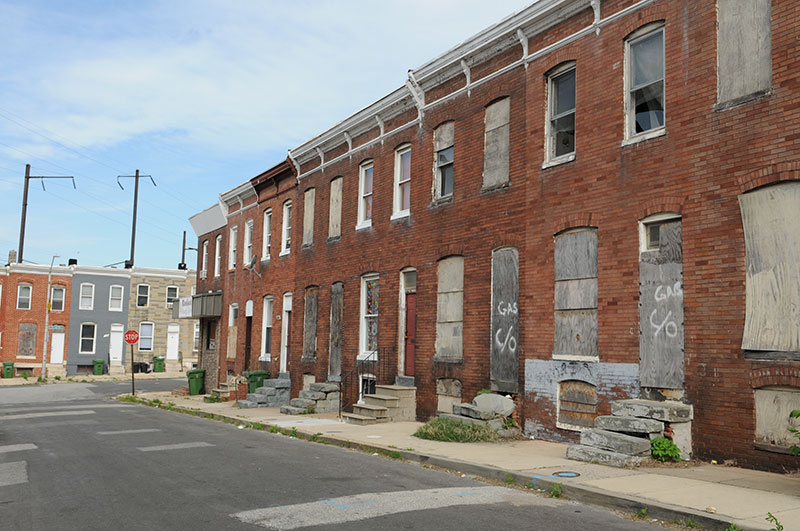
How do you turn this information into something positive? If we are working to help cities adapt to climate change (and we must) we have to do so in ways that simultaneously address social and economic opportunities and limitations. Environmental solutions that neglect the legacy and continued effects of racism won’t be resilient and they won’t be equitable. We have to make sure we’re always asking: does our resiliency rest on equity?
The Baltimore Ecosystem Study was one of two LTER sites, the other being Phoenix. Is the knowledge that has been gained from those two studies being incorporated into the planning of those cities and into things like policies and zoning regulations?
Both the Baltimore and Phoenix projects have positioned themselves to be engaged in those processes. Whether a difference is being made yet…that is a bigger question. We have tried very hard to be a part of the conversations. For example, Phoenix has something called the Decision Center for a Desert City, and they have staff who are seconded to the City Department of Planning to ensure that ecological expertise is available in the planning process. Phoenix is also doing work testing and evaluating xeriscaping (landscaping with water-saving plants) in different neighborhoods. They are doing some nice watershed-based stormwater management in an place called Indian Bend Wash.
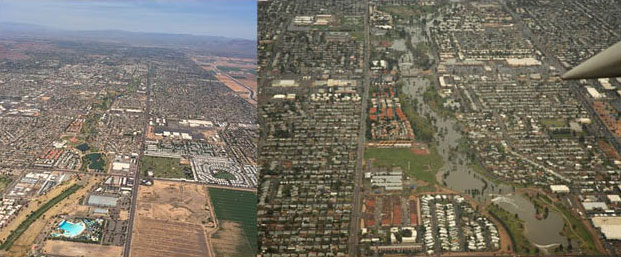
In Baltimore, we were very engaged in the process that led to the city’s sustainability plan. We were involved in conversations with the Office of Sustainability and continue to be engaged with that office as sustainability moves from the idealization to the reality. As I mentioned earlier, we have done a lot in Baltimore to help the city establish urban tree canopy goals and in doing so, we established a methodology that is helping other cities to better understand their tree canopies. We are also helping to put together a dataset for and assess the equity of green infrastructure projects implemented by government agencies and non-profits in the city. This includes relating the green infrastructure projects to community needs and perceptions. Like many cities, Baltimore has a vast amount of vacant property and abandoned buildings, and we’ve helped establish a planting palette for those spaces that is attractive, promotes biodiversity, and gives communities something that is visually engaging and of which they can be proud. Our economists came up with new ways for creating a “market” in a situation where you have so much abandonment. They discovered that city investments can be tuned in a way that really helps communities, so they are working to answer questions like, “How many abandoned houses would need to be abolished in a neighborhood to put the people in that neighborhood in a better position to have economic opportunity?” Heat is an urban problem everywhere, and both Phoenix and Baltimore have done lot of work on urban heat island stress and environmental justice.
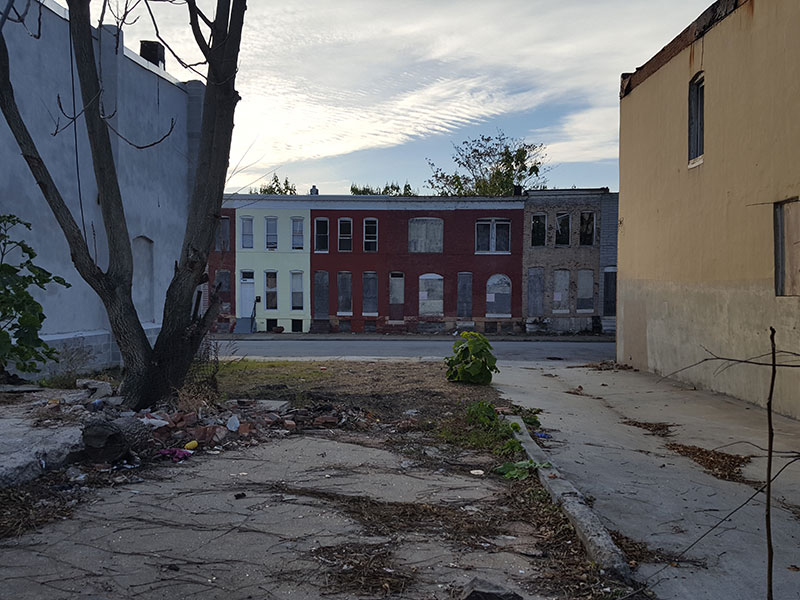
How can we close the gap between, say, a great green network plan and actual policies that go into effect?
In many ways, that question is better answered by other people. What do I see as needs? Ecologists need to be engaged throughout the planning process, not just at the site evaluation phase. That means ecologists are involved from the beginning, where you’re trying to understand the place where you’re going to act, through to the phase where you are evaluating what you’ve built to see if it is doing what you expected it to do.
Planning is getting much better at being community-oriented, or at least community-aware, but we need teams that not only have the architects, engineers, and traffic folks, but also social scientists, ecologists, and community members. All of that effort can feed up into the legislative or regulatory realm when people are constraining what projects can do and who must sign off on them. In addition to being signed off by engineers who will make sure the stuff isn’t going to fall down, perhaps project should also be signed off by social scientists who can say, “Yes, this plan has taken into account equity and social cohesion,” and ecologists who can say, “Yes, this plan has taken into account downstream effects to other neighborhoods or environments.”
Besides ecologists and social scientists, who else would you add to the traditional urban planning team to make it the ideal urban planning team?
Public health professionals (for their knowledge of things like the psychological benefits of green infrastructure and disease vectors that have environmental implications), historians and anthropologists (who are used to thinking deeply about how communities work and how groups of people interact), and of course community members and/or leaders. I would have these people involved in continual dialogue throughout the planning process, and not just as “marginal” disciplines engaged at the beginning. This is going to take facilitation. Ideally, you need someone whose only stake is the good functioning of the group.
Do you think we will see a time when ecology becomes the foundation for, or the primary factor influencing urban planning? Do we even want that?
I would like to make sure ecology as a real science, not just as a metaphor or greenwashing tool, is a part of the process. I don’t want it to be the only filter, but real ecological knowledge and approaches have to be part of the process. We have some good examples of people who have worked hard to get ecology into urban planning and design. In the past, there was Frederick Law Olmstead and Ian McHarg. Today, there are contemporaries like Anne Spirn, Frederick Steiner, and Kristina Hill.
It is important to know that you cannot go back to ecology textbooks from the 1970s and say, “this is what we need to bring in.” It’s not the old, deterministic ecology of stability. It’s ecology that is dynamic, multicausal, and open-ended, and it is very appropriate to cities, because that’s what cities are.
